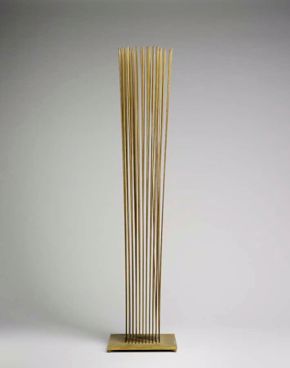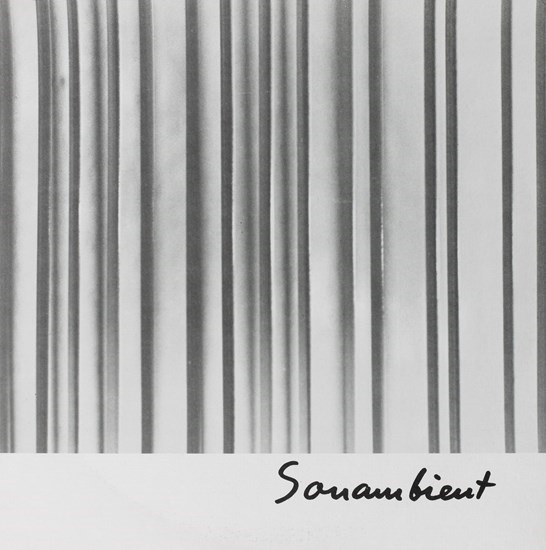Harry Bertoia: The Miracle of Sound June 18, 2019

Harry Bertoia, Sound Sculpture, c. 1970, beryllium copper and brass, the Museum of Fine Arts, Houston, Museum purchase funded by the John R. Eckel, Jr. Foundation. © Estate of Harry Bertoia / Artists Rights Society (ARS), New York
Harry Bertoia, Sonambient: Continuum, Near and Far, c. 1970–78, LP record album with cover photography by Guy Tomme, the Museum of Fine Arts, Houston, Museum purchase funded by the John R. Eckel, Jr. Foundation. © Estate of Harry Bertoia / Artists Rights Society (ARS), New York
Harry Bertoia, Sound Sculpture, c. 1970, steel, the Museum of Fine Arts, Houston, Museum purchase funded by the John R. Eckel, Jr. Foundation. © Estate of Harry Bertoia / Artists Rights Society (ARS), New York
Harry Bertoia, Sound Sculpture, c. 1970, beryllium copper and brass, the Museum of Fine Arts, Houston, Museum purchase funded by the John R. Eckel, Jr. Foundation. © Estate of Harry Bertoia / Artists Rights Society (ARS), New York
In 1937 Harry Bertoia entered the newly established Cranbrook Academy of Art in Bloomfield Hills, Michigan. Founded by newspaper baron George Booth, Cranbrook’s program reflected the essential tenets of the Arts and Crafts movement: to uphold high design standards and to establish a collective means of production that could integrate daily life and social value.
A Design Revolution
Uniting manual traditions of craft with new technologies, the Cranbrook faculty ignited a design revolution in America. Bertoia’s own contributions to this revolution are the perennially popular wire-mesh chairs that bear his name, first produced by Knoll Associates in the early 1950s.
A Shift to Sculpture and Sound
Bertoia shifted his attention from design to sculpture in 1953. He continued to embrace the egalitarian principals of Cranbrook as he worked in both steel and bronze, and his remarkably prolific production ranged from intimate organic forms to monumental commissions. Thanks to the extraordinary generosity of the John R. Eckel, Jr. Foundation, the MFAH owns a comprehensive survey of Bertoia’s work, including three of his Sound Sculptures and a complete discography of his Sonambient recordings.

A Continuing Process
The first Sound Sculpture came about by chance in the late 1950s. “I accidentally struck one rod when I wanted to bend it,” Bertoia recounted. “The sound echoed in my mind for a very long time. Then it initiated a deliberate gesture in search of understanding what a group of wires would do—and the process is still going on.” As the series progressed, Bertoia refined his compositions, ranging from narrowly elongated constructions to denser arrays of weighted rods, each with its unique tonal signature. He made recordings of the music created by his Sound Sculptures, which were released as individual LPs in 1970 and 1978. The accompanying album covers are landmarks in graphic design, and Guy Tomme’s photographs beautifully distill the artist’s holistic vision.
A Great Lyrical Poet
In the liner notes of the first album, Marie-Louise d’Otrange Mastai observed, “These metallic fasces are not rigid, but ‘give’ when stoked—at the same time releasing lingering musical chords of a weirdly haunting quality, like some other-worldly harps. . . . The works of Harry Bertoia celebrate the bounty of the good earth, shimmering sheaves of golden wheat stalked in endless rows, ‘on the fruitful plain,’ great crashing cataracts, crystal pure with steel-hard volutes. . . . To suggest so much by means so simple is the mark of a great lyrical poet.”





